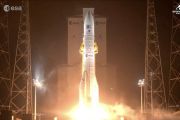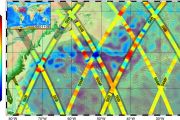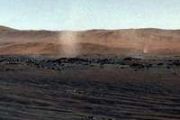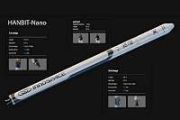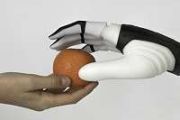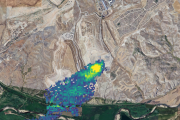
Copernical Team
Tracing organic matter origins in Martian sediments
 Scientists are investigating Martian sediments to understand early environmental conditions and potential signs of past life. Sediments collected by the Curiosity rover from Gale Crater, an ancient lake formed 3.8 billion years ago, revealed organic matter with a lower carbon-13 isotope content than Earth's, suggesting different formation processes on Mars.
A study in Nature Geoscience on
Scientists are investigating Martian sediments to understand early environmental conditions and potential signs of past life. Sediments collected by the Curiosity rover from Gale Crater, an ancient lake formed 3.8 billion years ago, revealed organic matter with a lower carbon-13 isotope content than Earth's, suggesting different formation processes on Mars.
A study in Nature Geoscience on SpaceX shows off its new extravehicular activity suit
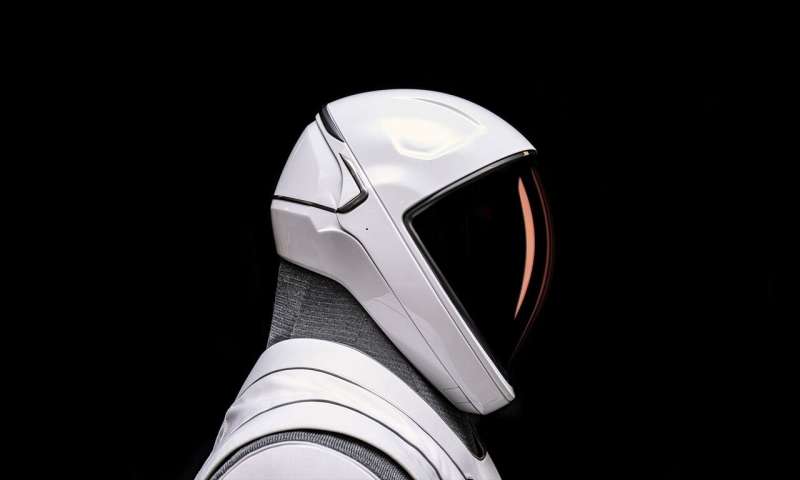
In February 2022, SpaceX and entrepreneur/philanthropist Jared Isaacman (commander of the Inspiration4 mission) announced they were launching a new program to "rapidly advance human spaceflight capabilities" while supporting important charitable and humanitarian causes here on Earth. It's called the Polaris Program.
In a recent press release, SpaceX revealed the spacesuits its Polaris astronauts will be wearing and described the research that the crews will conduct during the program's three human spaceflight missions—the first of which is scheduled to launch this summer.
These missions will build on the company's experience with NASA's Commercial Crew Delivery (CCD) program, where NASA certified SpaceX's Crew Dragon vehicle to transport crews to the International Space Station (ISS). According to the company's press statement, the new suits are an evolution of the Intravehicular Activity (IVA) suit currently used by Dragon crews. This included the crew of the Demo-2 mission, which validated the flight system and was the first crewed mission to take off from U.S.
FAA initiates environmental impact study for SpaceX Starship launches from Kennedy Space Center
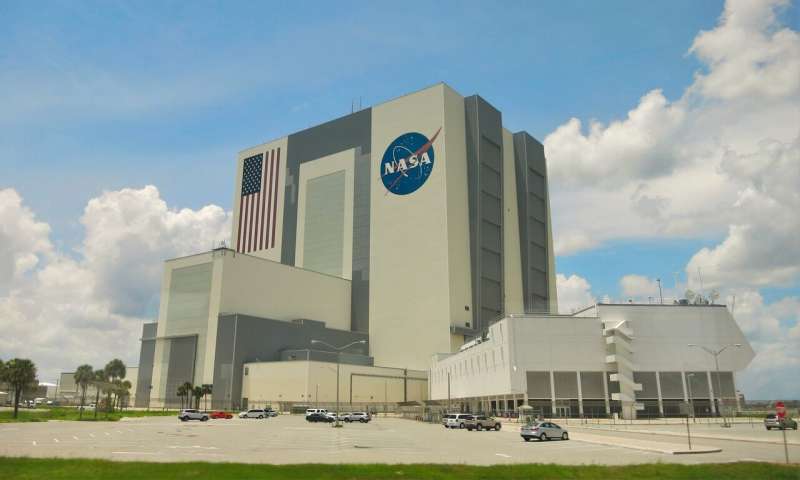
SpaceX's plans to build a Starship launch complex at Kennedy Space Center are moving closer to reality even as it potentially takes over a launch site from neighboring Cape Canaveral Space Force Station.
The Federal Aviation Administration said it was beginning an Environmental Impact Statement for Starship launches from KSC's Launch Complex 39-A. SpaceX had already built the beginning of a Starship launch tower adjacent to its existing pad that supports Falcon 9 and Falcon Heavy launches.
Noticeable work on that new launch tower stopped in late 2022 as SpaceX shifted focus to develop its Starship and Super Heavy rocket from its Texas test launch site where it has managed three flights with varying degrees of success. The powerful rocket produces more than 16 million pounds of thrust at liftoff, nearly double that of NASA's Space Launch System rocket for its Artemis program.
The most recent launch in March saw the Starship upper stage finally achieve orbit before it burned up on reentry over the Indian Ocean while the Super Heavy booster crashed into the Gulf of Mexico.
US to raise concerns at first China AI talks
 The United States and China will hold their first talks on artificial intelligence on Tuesday, with Washington set to raise concerns about Beijing's use of the fast-emerging technology, US officials said.
The inaugural dialogue - announced without a date during Secretary of State Antony Blinken's visit last month to Beijing - will take place in Geneva involving senior officials.
US off
The United States and China will hold their first talks on artificial intelligence on Tuesday, with Washington set to raise concerns about Beijing's use of the fast-emerging technology, US officials said.
The inaugural dialogue - announced without a date during Secretary of State Antony Blinken's visit last month to Beijing - will take place in Geneva involving senior officials.
US off Looking to the Stars: The Science Behind Different Solar Eclipses
 For the keen-eyed astronomers among us, it's rapidly approaching eclipse season. With a total lunar eclipse set to occur in North America on April 8, 2024, there's never been a better time to learn about the different types of solar eclipses.
Eclipses are a fascinating astronomical event - historically, many cultures assumed that they disrupted the natural order - in some instances, they w
For the keen-eyed astronomers among us, it's rapidly approaching eclipse season. With a total lunar eclipse set to occur in North America on April 8, 2024, there's never been a better time to learn about the different types of solar eclipses.
Eclipses are a fascinating astronomical event - historically, many cultures assumed that they disrupted the natural order - in some instances, they w Third time could prove lucky for aurora viewers around the world
 Anyone who missed the dazzling auroras dancing across night skies earlier this weekend will get another chance Sunday evening, as the powerful geomagnetic storm hitting the Earth is expected to intensify yet again.
"Several intense Coronal Mass Ejections are still anticipated to reach the Earth's outer atmosphere by later today," the US National Weather Service said.
Those ejections -
Anyone who missed the dazzling auroras dancing across night skies earlier this weekend will get another chance Sunday evening, as the powerful geomagnetic storm hitting the Earth is expected to intensify yet again.
"Several intense Coronal Mass Ejections are still anticipated to reach the Earth's outer atmosphere by later today," the US National Weather Service said.
Those ejections - Where is the Best Place to Buy Used Books?
 An average student's battle to acquire a textbook at a reasonable price is the hardship he/she has to go through every day. Baffling if it is possible to get the textbooks for the semester without any fortune to waste. There is no doubt in my mind that the top spot of receiving money is not the most expensive one and it helps you to start the year off smoothly with no financial troubles.
An average student's battle to acquire a textbook at a reasonable price is the hardship he/she has to go through every day. Baffling if it is possible to get the textbooks for the semester without any fortune to waste. There is no doubt in my mind that the top spot of receiving money is not the most expensive one and it helps you to start the year off smoothly with no financial troubles. SpaceX launches 23 Starlink satellites from Florida
 SpaceX launched 23 Starlink satellites into low-Earth orbit from the Cape Canaveral Space Force Station on Sunday night, bringing the total number of Starlink satellites in orbit to just over 6,000.
This was the 15th mission for the reusable booster rocket, which launches the spacecraft into orbit, largely under the power of a million pounds of rocket-grade kerosene. Nine of its launche
SpaceX launched 23 Starlink satellites into low-Earth orbit from the Cape Canaveral Space Force Station on Sunday night, bringing the total number of Starlink satellites in orbit to just over 6,000.
This was the 15th mission for the reusable booster rocket, which launches the spacecraft into orbit, largely under the power of a million pounds of rocket-grade kerosene. Nine of its launche Experiment Allows for Potential Millions of Qubits on Single Chip
 In the ongoing quest for a viable quantum computer, global researchers are exploring numerous qubit technologies, yet a consensus on the optimal qubit type remains elusive.
Qubits, the core of quantum computing, are crucial for data processing, transfer, and storage. They must reliably store information and facilitate swift data processing, which depends on stable, rapid interactions among
In the ongoing quest for a viable quantum computer, global researchers are exploring numerous qubit technologies, yet a consensus on the optimal qubit type remains elusive.
Qubits, the core of quantum computing, are crucial for data processing, transfer, and storage. They must reliably store information and facilitate swift data processing, which depends on stable, rapid interactions among Quantum advances enhance understanding of high-temperature superconductors
 Technological advancements like superfast levitating trains, long-range lossless power transmission, and faster MRI machines hinge on the development of materials that superconduct electricity at room temperature.
Researchers have now published findings in the May 10 issue of Science that deepen our understanding of superconductivity in materials known as cuprates, which have confounded sc
Technological advancements like superfast levitating trains, long-range lossless power transmission, and faster MRI machines hinge on the development of materials that superconduct electricity at room temperature.
Researchers have now published findings in the May 10 issue of Science that deepen our understanding of superconductivity in materials known as cuprates, which have confounded sc 
